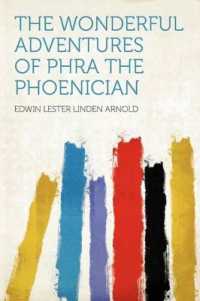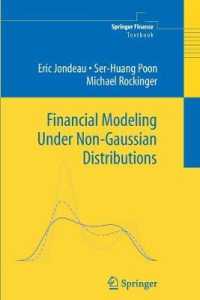- ホーム
- > 洋書
- > 英文書
- > History / World
Full Description
What did Australians read? This book answers this question in terms of books rather than newspapers and considers the long nineteenth century, interpreted as running from 1788 to 1901. In the wake of this primary question, several others arise: how did Australians acquire the books they read, and how did readers in the outback overcome the handicaps of distance and remoteness? Did they read for pleasure, instruction, self-edification, or spiritual sustenance? More importantly, how did Australian readers respond to the books they read? The evidence is drawn from autobiographical sources, in which individual readers related their personal reading experiences and responses.
At the same time, the book pursues a second and related question: What did Australians write? Reference is made here not to the kind of writing we know as 'literature', but to the non-literary writing which cultural historians call 'ordinary writings'. These are the writings of everyday life, represented in this book by diaries, journals, hand-written newspapers and correspondence. The focus is wide enough to include the everyday cultural practices of people of low social status and little education. The writing practices of the partially literate, including writing delegated to a third party, have their place here.
In this double investigation, the book draws on evidence from a cohort of 101 nineteenth-century readers and writers. They are a heterogeneous group of autobiographers, coming from Melbourne and Sydney to rural Queensland and Western Australia. They come from the city and the bush, from coastal towns and the interior, from sheep stations, gold diggings and city offices. They show us the perennial importance of Shakespeare and the Bible, the popularity of the English canon, the prestige of poetry and the importance of religious reading. Books held the Empire together but, as they travelled, their meanings changed according to the local cultural environment. This book registers such nuances in the Australian context. The writing of this group is represented by some prolific diarists and correspondents. In the late-nineteenth century, the eastern colonies became world leaders in sending letters. The postal environment which made this possible is also examined.
Contents
Acknowledgements; Chapter 1 Readers and Writers in Colonial Australia; Part 1 Arriving; Part 2 Reading White Australia; Part 3 Convict and First Nation Literacies ; Part 4 Everyday Writings; Bibliography; Index








